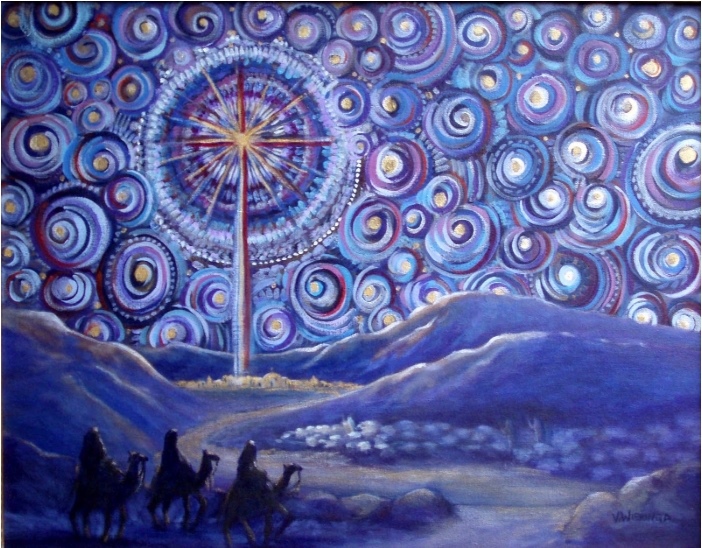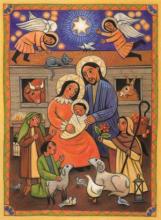Commonweal Magazine
Published on Commonweal Magazine (https://www.commonwealmagazine.org)
Home > Misenchantment
Photo by Vlad Busuioc on Unsplash
I come to praise Eugene McCarraher (rather lavishly, in fact), not to bury him. But I may as well begin with a complaint, if only so as to appear evenhanded. In the penultimate paragraph of his enormous and extraordinary new book The Enchantments of Mammon [1], McCarraher conflates Alasdair MacIntyre’s famous invocation of St. Benedict at the end of After Virtue with what has come misleadingly to be called the “Benedict Option [2],” rejecting both together as though they were identical in meaning—which is to say, as if both offered a counsel of Christian disengagement from modern society and issued a call to withdrawal into isolated communities. This is an error. The Benedict Option is the title of an earnest but intellectually confused book by a journalist whose ultimate recommendations are difficult to discern amid the turbulences of his passions and anxieties. By contrast, the figure of St. Benedict as MacIntyre employs it has a very precise meaning: Benedict represents a moment when—in the lengthening twilight of a dissolving classical and Christian civilization—the slow labor of rescuing, recovering, and even reconstructing a unified Christian ethos was inaugurated. That labor began under the shelter of new forms of association located at the very heart of culture. MacIntyre’s St. Benedict has nothing to do with disengagement, and everything to do with the preservation and redemption of communal memory and public reason.
The misunderstanding is unfortunate, since it strikes a discordant note just at the close of a book that might well be called symphonic in form, and in the course of which McCarraher sounds a great many McIntyrean themes of his own. Like MacIntyre, McCarraher is impatient with those tedious modern dogmatisms that masquerade as deliverances of enlightened and disinterested rationality. He too finds the modern displacement of any moral grammar based on the cultivation of virtues by a fragmentary ethos of private values, public platitudes, and voluntarist individualisms a depressing reality. He too laments the reduction of ethical reasoning to little more than assertions of the will and celebrations of private property as the supreme index of the good. He too refuses to consent to modern secularism’s claims for itself, even while eschewing the traditionalist’s politics of nostalgia. Above all, like MacIntyre, McCarraher both recognizes and detests capitalism’s spoliations of creation and disintegration of communities, and casts a fond, forlorn eye toward the possibility of restoring a rationality of genuine human life.
But let me start again.
The Enchantments of Mammon is a magnificent book. It is, before all else, a sheer marvel of patient scholarship, history on a grand scale and in the best tradition of historical writing: a comprehensive account of the rise and triumph of capitalism in the modern age, not only as an economics, but also as our most pervasive and dominant system of ultimate values. But the book is far more than that. It is also a work of profound moral insight: a searing spiritual critique of a vision of reality that reduces everything mysterious, beautiful, fragile, and potentially transcendent in human experience to instances of—or opportunities for—acquisition and personal power, and that seeks no end higher than the transformation of creation’s substantial goods into the lifeless abstraction of monetary value. It is, moreover, a work delightfully subversive of the standard story of how this vision of things progressively became the very shape of the world we all now share (or, I suppose it would be better to say, the world we do not really share at all).
In McCarraher’s telling, capitalism as it has taken shape over the past few centuries is not the product of any kind of epochal “disenchantment” of the world (the Reformation, the scientific revolution, what have you). Far less does it represent the triumph of a more “realist” and “pragmatic” understanding of private wealth and civil society. Instead, it is another kind of religion, one whose chief tenets may be more irrational than almost any of the creeds it replaced at the various centers of global culture. It is the coldest and most stupefying of idolatries: a faith that has forsaken the sacral understanding of creation as something charged with God’s grandeur, flowing from the inexhaustible wellsprings of God’s charity, in favor of an entirely opposed order of sacred attachments. Rather than a sane calculation of material possibilities and human motives, it is in fact an enthusiast cult of insatiable consumption allied to a degrading metaphysics of human nature. And it is sustained, like any creed, by doctrines and miracles, mysteries and revelations, devotions and credulities, promises of beatitude and threats of dereliction. McCarraher urges us to stop thinking of the modern age as the godless sequel to the ages of faith, and recognize it instead as a period of the most destructive kind of superstition, one in which acquisition and ambition have become our highest moral aims, consumer goods (the more intrinsically worthless the better) our fetishes, and impossible promises of limitless material felicity our shared eschatology. And so deep is our faith in these things that we are willing to sacrifice the whole of creation in their service. McCarraher, therefore, prefers to speak not of disenchantment, but of “misenchantment”—spiritual captivity to the glamor of an especially squalid god.
The book tells not only of capitalism’s most buoyant apologists but also of its most caustic critics and dissidents—the anarchists, socialists, communists, distributists, and Christian recusants of every kind.
It all began, of course, as a Christian heresy. Even if McCarraher rejects the notion that ours is an age of disenchantment, he recognizes that its intrinsic hostility to everything genuinely enchanting is itself a kind of rapture of the soul toward impalpable realms and unseen divinities. And this is partly because our age inherited all the sacred intuitions and longings for glorious transformation that earlier ages had directed toward a Kingdom supposedly not of this world. The dreams of one epoch inevitably yield to the disappointments of another. Still, the hunger for the sacred always persists, even as one way of life grows old, suppressed forces reassert themselves, and new ideas arise to fill in the spaces vacated by discarded certitudes. A great part of capitalism’s power over our imaginations, McCar-raher suggests, is derived from the authority it borrowed from a Christian language that had become detached from the larger rationality of the sacramental love of the world. And, while McCarraher holds no particular variety of Christian wholly responsible for these developments, he does not hesitate to assign particular blame where he thinks it just to do so.
He devotes, for instance, many extremely illuminating pages to the Puritan ethic, as it took shape first in Britain and then in the American colonies, and to the ways in which Puritan homiletics and moral discourse provided an empty rhetoric denouncing Mammon’s seductions while quietly laying a firm basis for Mammon’s reign. Above all, he shows how pernicious the Puritan language of godly “improvement” proved when used to justify—even to sanctify—what otherwise would have been called avarice and plunder. What began as a destructive heresy in Britain—as factory manufacture displaced free artisanal production, and as enclosure of the commons progressively destroyed communal usufructs—was only made all the more pernicious by its transplantation to the New World. Here, bright with the luster of holiness but unencumbered by the cultural traces of older orders of spiritual value, it took deep root and flourished without hindrance. And, of course, it was this evangelical fervor for “improving” the land and the people who worked it that became the chief justification for displacing the native peoples of the New World, and for condemning them as lazy, unenterprising, sybaritic, and positively wicked in their preference for living off the land’s bounty rather than transforming the wilds into fixed forms of private property. (McCarraher’s treatment of John Winthrop’s “theology of ethnic cleansing” is especially harrowing.)
Hence American Puritanism’s ghastly combination of the unappeasable pursuit of ever-greater profit with a private ethos not of holy poverty, but of pious drabness. Hence too, America’s historically unique fusion of the opulent and the barbaric, the devout and the rapacious. In a sense, America was born out of the transition from a Christian to a capitalist religious sensibility, mediated through the Puritan’s odd inversion of Christianity’s celebration of sacred dispossession into an ethos of unostentatious wealth. The baptismal waters of the Atlantic washed away the last lingering traces of a genuinely Christian vision of things, and what reached our shores was an altogether new religion. From the first, the nation was already set on its course toward consumer culture’s counterfeit beatific vision, its zealous devotion to the technological domination of creation, and its unconquerable faith in the redemptive power of possessions righteously obtained and vigilantly protected. But only the most earnestly zealous of the apostles of this new faith could have imagined that theirs would one day become the sole unchallenged religion of the entire globe.
This, though, is only a small part of McCarraher’s narrative, which is too vast to distill into a summary in this space. And the value of the book lies not just in that grand overarching story, but also in the countless incidental details that throng the plot. On every page, there are poignant clarifications and illuminations and aperçus—the account of the Lockean elevation of monetary value over use-value, say, or observations of the legal personhood progressively ceded to joint-stock and limited-liability corporations, or bitter commentary on the rise of management theory and advertising strategies, and so forth. Moreover, as much as McCarraher’s is a history of capitalism’s slow but inexorable triumph, both as a concrete reality and as a transcendental ideal, it is also a more heartening history of resistance. The book tells not only of capitalism’s most buoyant apologists but also of its most caustic critics and dissidents—the anarchists, socialists, communists, distributists, and Christian recusants of every kind. And even these critics and dissidents are scrupulously differentiated from one another in McCarraher’s account, as are the varying degrees to which they either succeeded or failed in rejecting Mammon’s enchantments to the end.
For instance, McCarraher is pitilessly honest about those forms of traditional socialism and communism that have all too often recapitulated the superstitions of industrial production and management, routinized labor, the technological conquest of nature, and the mechanisms of the modern nation-state. Like Adorno and Horkheimer, for example, McCarraher recognizes that the Marx who wrote the third volume of Das Kapital—with its elevation of unremitting labor over festal leisure, its fantasies of limitless manufacture and exploitation of the earth’s resources, and its insistence on a total central control of production—was at the end of the day the most monstrously ambitious corporatist in human history, one whose ideas, if realized, would have changed all of life and the whole of the world into one gigantic factory, human labor transformed into a machine of relentless and joyless production. In fact, much of the secular left comes across in these pages as, at best, naïve about capitalism’s power to absorb everything into the logic of the market and, at worst, complicit in that logic. One thing a reader will certainly take away from McCarraher’s treatment of many forms of classical socialism is that capitalism’s capacity for translating everything—even dissent from capitalism—into a kind of bourgeois commodity is all but infinite. And so his sympathies lie elsewhere.
McCarraher’s is an essentially Christian Romantic vision. For him, the only true path of resistance to capitalism’s destructive energies is one that leads away from the logic of the market: away, that is, from the idea that wealth-creation should be the highest constitutive good of any culture, and from the notion that technological power over nature should be the moral ideal of a sane human society. He longs instead for a truly sacral view of creation, approached with a sensibility open to transcendence. He longs for a culture that would treat nature not as a reservoir of morally neutral resources waiting to be converted into private affluence, but rather as an abundance freely given and freely shared within the embrace of a spiritual order of participation. Such a culture would treat the good things of creation as sacramental mediations and signs of the divine mystery upholding all things. McCarraher’s heroes are not so much Marx and Engels as John Ruskin and William Morris and others of similar disposition. And he has the discernment to recognize the potentially radical political philosophies latent in many places we might typically regard as lying altogether outside the political, such as John Muir’s nature-mysticism. The common ethos to which he is principally devoted is one that relies first upon God’s grace and love, as expressed in creation’s heedless generosity, and that presumes a kind of immanent sacredness in the world available only to those who are willing to receive it as a common inheritance. What he desires is an ethics of personal wonder and of the cultural hunger for God’s presence in the depths of things. It is an ethics, before all else, of the commons, permitted once again to flourish, to run to seed, to overflow, and to offer shelter to all.
So, in the end, while the story McCar-raher tells is principally one of alienation and loss, idolatry and willful blindness to beauty, it is also a tale about all those lingering sparks of an older metaphysics of creation as divine glory that might still be gathered up and kindled into a full flame. Perhaps there might arise a new St. Benedict or two, or a few million, who could strive to overcome the ethics of sanctified greed that separates human beings from one another and from the rest of the -natural world, and who might inspire a renewed awareness that the holiness of living things far surpasses the charms of lifeless wealth. McCarraher clearly believes that it is still possible to revive in ourselves, as late modern persons, a longing for the sort of abundance that is waiting for us when we do not seek to reduce everything into mere property. But this is an abundance visible only to love.
I risk making McCarraher’s book sound more rhapsodic than practical, and that would be an injustice. He understands that his is also a vision that requires a certain pragmatic economics, and he does not neglect material theory in recommending the spiritual values he believes in.
Of course, no story—or none worth telling—really has a single discrete beginning or a single definitive conclusion. Enormous as The Enchantments of Mammon is, it could well have been longer still. It might, if nothing else, have dwelt a little less exclusively on capitalism’s “Anglo-Saxonism” (as the French would say), and perhaps explored at greater length the rise of capitalism in the late-medieval and early-modern Italian city-states, or the occult ties between early capitalist economics and Iberian colonialism in the Americas and the rebirth of chattel slavery. There are Catholic chapters perhaps yet to be added to the predominantly Protestant story that McCarraher tells. But no book can do everything and this one is already a majestic achievement. It will enjoy a long posterity, I think, in both the academic world and the world of the general readership. It is exhaustive, precise, and rich. But more important still, it is a work of great moral and spiritual intelligence, and one that invites contemplation about things we can’t afford not to care about deeply.
The Enchantments of Mammon
How Capitalism Became the Religion of Modernity
Eugene McCarraher
Harvard University Press, $39.95, 816 pp.
Issue:
January 2020 [3]

 This page is dedicated to Joe Humphries who tells them and Mary Humphries who still laughs at them!
This page is dedicated to Joe Humphries who tells them and Mary Humphries who still laughs at them!
 Holy Moly…
Holy Moly… 














 Th
Th
 BLESSED ARE YOU,LORD OUR GOD,
BLESSED ARE YOU,LORD OUR GOD, SAINT ANTHONY’S ADVENT 2020
SAINT ANTHONY’S ADVENT 2020